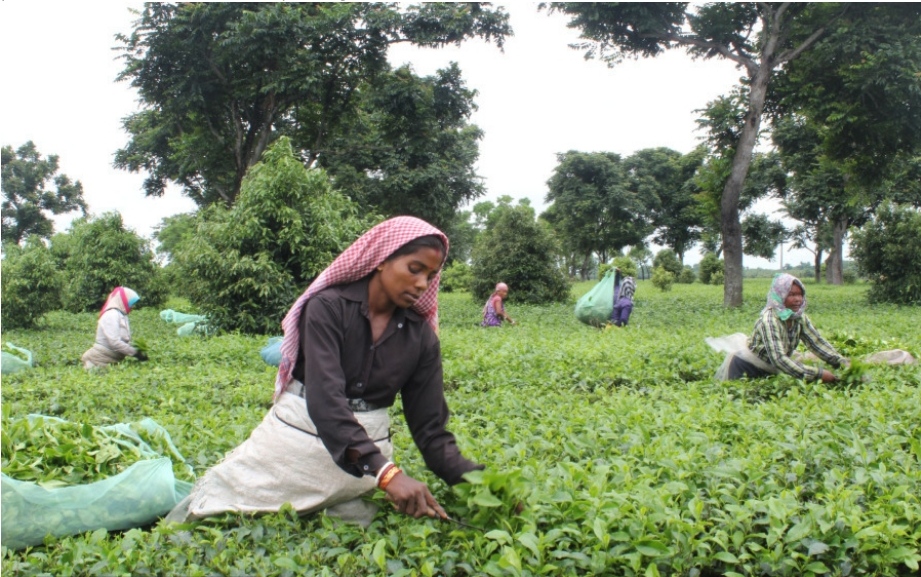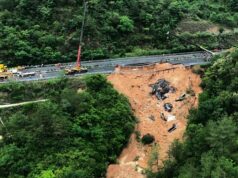Nepal looks to Pakistani, Russian and Chinese markets to diversify its tea trade

By Krishana Prasain
At present, the major market for Nepali CTC tea or black tea is India. Nepal exports around 90 percent of its orthodox tea and 50 percent of its CTC tea to India at low price tags.
A month ago, 6-7 containers of CTC tea were exported to Pakistan via India. A container contains 18 tonnes to 20 tonnes
Nepal has resumed the export of crush, tear, and curl (CTC) tea to Pakistan after years, as the demand from the world’s largest tea importer has significantly grown, according to Nepali traders, who are now eying former Asian buyers to diversify the market currently limited to India.
Pakistan and Russia were once key markets for Nepali CTC tea. China is also a big potential market, traders say.
Currently, the major market for Nepali CTC tea or black tea is India. Nepal exports around 90 percent of its orthodox tea and 50 percent of its CTC tea to the southern neighbour, according to government statistics.
Traders say that representatives of the Pakistan Tea Association are scheduled to visit Nepal later this month, which can open doors for Nepal to export tea in bulk through business-to-business or government-to-government arrangements.
While Nepal gets Rs160 a kg for CTC tea from Indian buyers, Pakistan has offered Rs10 to Rs15 more per kg, according to exporters.
“CTC tea export to Pakistan has resumed. This is a good sign for the diversification of Nepal’s tea market beyond India,” said Deepak Khanal, director of Nepal Tea and Coffee Development Board.
However, traders note that shipping out of the country through Indian territory is difficult.
Trade relations between Nepal and India, especially pertaining to the movement of agricultural products across their shared borders, have not always been very smooth, they say.
A month ago, 6-7 containers of CTC tea were exported to Pakistan via India. A container contains 18 tonnes to 20 tonnes.
“Now, the Pakistani buyers have demanded 60 tonnes of tea of the same quality, immediately,” said Khanal.
Two different brands of CTC tea from Giri Bandhu Tea Estate in Jhapa were exported to Pakistan, he said.
“Compared to India, Nepali traders are likely to get Rs10 to Rs15 more on a kg from Pakistani buyers,” said Indra Adhikari, regional director of the National Tea and Coffee Development Board in Jhapa.
“After years, the first consignment of CTC tea was sent to Pakistan.”
Chhatra Giri, managing director of Giri Bandhu Tea Estate, said export normally depends on the demand. “A huge demand is coming from Pakistan. We are not sure why. We used to export CTC tea to Pakistan and Russia years ago, but it was abruptly stopped.”
He said that he was not aware of why exports to these countries stopped.
“Now, the demand is back.”
A delegation from the Pakistan Tea Association is scheduled to visit Nepal to discuss trading and transportation of tea in bulk, said Adhikari.
The tea exporters said that if the quality of Nepali CTC tea is further upgraded, demand may rise from Asian countries.
Pakistan, which has 240 million population, is the world’s largest importer of tea, buying more than $640 million worth in 2020, according to the Observatory of Economic Complexity.
In 2022, Pakistanis had been urged to drink less tea to keep the economy afloat, as the world’s largest tea importer grapples with soaring inflation and a fast-depreciating rupee.
Amid the prospect, after orthodox tea, Nepal’s tea regulating body is set to issue a quality trademark for CTC tea.
The board has prepared draft guidelines, which are in the final stages of completion to give the CTC tea a quality trademark recognition. In September 2020, Nepal’s orthodox tea got its trademark, 157 years after the country started growing the herb.
“Currently, tea is being exported to Pakistan through individual efforts,” Khanal said. “If the government takes initiative, it would be a huge boost for the tea industry.”
At a time when Nepal is looking for an alternative market, the government should create a favourable environment for buyers in Asia, Adhikari said.
Officials at the tea board said that while exporting the first consignment to Pakistan via India, the southern neighbour created an obstacle saying it would not allow the tea export to Pakistan through its soil.
“The Indian side stopped trucks loaded with Nepali CTC tea being exported to Pakistan,” said the officials. “The board requested the Consul General of Nepal in Kolkata, India to coordinate on the issue after which the vehicles were released.”
For years, Indian buyers have been alleging that Nepal’s tea is substandard and as a result buy them at lower prices. Nepali tea is being stopped at different border points under different pretexts.
In June 2022, India’s Parliamentary Standing Committee on Commerce asked the Indian government to apply stringent requirements for the certificate of origin on tea imported from Nepal. The committee had said the entry of low-quality products from neighbouring countries was jeopardising the Indian tea industry and called for imposition of anti-dumping duty ranging from 40-100 percent. The panel had also asked that the Indo-Nepal Treaty of 1950 be reviewed.
In 2018, 11 trucks carrying tea were stopped at the Indian customs in Panitanki for a week over quarantine issues. Again, in 2020, over a dozen trucks carrying Nepali tea were stranded over the bridge of the Mechi River for days.
The Darjeeling Tea Association, for a long time, had been requesting the Indian government to stop the import of Nepali tea.
“We are exploring different markets for Nepali tea,” said Khanal.
“Interest shown by Pakistani buyers has given us high hopes,” he added.
Nepal has also started exporting CTC tea to China from the fiscal year 2021-22, but in nominal quantities. The customs data shows that a tonne of CTC tea worth Rs231,000 was exported to China. The export of CTC tea increased to 2 tonnes worth Rs1.10 million in the last fiscal year 2022-23.
The country has already exported 1 tonne of CTC worth Rs409,000 to China in the first five months of the current fiscal year. In this period, Nepal exported 6,953 tonnes of CTC tea worth Rs1.61 billion to India followed by 108 tonnes worth Rs58.39 million to Russia, 22 tonnes worth Rs39.19 million to Germany, 13 tonnes worth Rs10.49 million to Japan and 10 tonnes worth Rs17.24 million to France.
Nepal also dispatched CTC tea in small quantities to Australia, Canada, Italy, the Netherlands, Sweden and the US in the first five months of the current fiscal year.
The country exported 16,491 tonnes of CTC tea for Rs3.61 billion in the last fiscal year.
Nepal produces 26,379 tonnes of tea annually on over 20,237 hectares. Of this, 18,902 tonnes is CTC tea, according to the statistics of the Ministry of Agriculture.
Traders expect the assignment of trademark quality to CTC tea to increase its demand in the new market.
Suresh Mittal, chairman of Nepal Tea Producers’ Association, said buyers generally look for cheaper tea. The demand in the new market might have increased due to competitive rates.
Nepal grows two types of tea: Camellia assamica or CTC tea which grows at lower altitudes and in the hot and humid plains of Nepal, primarily in Jhapa district. This tea accounts for almost 95 percent of domestic consumption owing to its lower cost of production.
Camellia sinensis or orthodox tea is grown at altitudes of 900 to 2,100 metres. Four eastern hill districts—Ilam, Panchthar, Dhankuta and Tehrathum—are known for producing quality orthodox tea.
Source: Kathmandu Post



